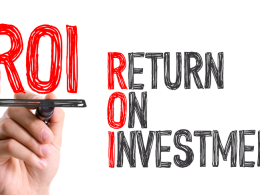The Spring Statement is a key moment in the UK’s economic calendar. As the country grapples with inflation, cost-of-living pressures, and political transitions, this annual update from the Chancellor of the Exchequer sets the tone for financial policy in the year ahead.
With the 2025 Spring Statement attracting attention from economists, businesses, and households alike, many are eager to know not just what’s inside the announcement but when exactly it takes place.
This article explores the time of the Spring Statement, the person delivering it, where to watch it, and what it could mean for markets, taxpayers, and the future of the UK economy.
What Is the Spring Statement?

The Spring Statement is an annual financial update delivered by the Chancellor of the Exchequer to Parliament.
Unlike the Autumn Budget, which tends to introduce major tax and spending changes, the Spring Statement typically serves as a fiscal checkpoint. It gives the government a platform to present updated forecasts, economic outlooks, and occasionally, policy revisions.
Originally introduced as part of the UK government’s effort to simplify the budgetary process, the Spring Statement has evolved into a crucial event.
It is when the Chancellor outlines the country’s economic direction, responding to current challenges and preparing the groundwork for broader decisions in the Autumn Budget.
The Spring Statement also includes projections from the Office for Budget Responsibility (OBR), allowing analysts and commentators to measure how the UK economy is performing compared to expectations.
Though it may not always introduce sweeping reforms, its importance lies in its timing, transparency, and ability to shift market expectations.
In 2025, this financial update carries additional weight. With Rachel Reeves serving as the Chancellor under a new Labour-led government, the policies and projections she outlines are under scrutiny not just from opposition parties but from the public and global investors alike.
What Time Is the Spring Statement?
In 2025, the Spring Statement is scheduled to be delivered by Chancellor Rachel Reeves at 12:30 PM GMT on Wednesday, 12 March 2025.
This time coincides with the standard practice of addressing Parliament shortly after Prime Minister’s Questions (PMQs), which typically concludes around midday.
The exact timing is crucial for a few reasons:
- Financial markets closely monitor the statement in real-time, as any policy shifts can affect stocks, bonds, and the pound.
- Media outlets provide live commentary and analysis, requiring synchronised coverage.
- Households and businesses seeking clarity on taxation, spending, or public service funding plan their response based on immediate takeaways.
While the statement begins at 12:30 PM, it often lasts anywhere from 30 minutes to an hour, depending on the volume of content and interruptions during delivery.
The timing is confirmed via official Parliamentary schedules and reinforced through government briefings.
In 2025, given the political climate and ongoing economic pressures, this Spring Statement is expected to draw considerable public attention across TV, radio, and online platforms.
Who Delivers the Spring Statement and Why Does It Matter?

The 2025 Spring Statement is delivered by Rachel Reeves, the Chancellor of the Exchequer. She assumed office following the 2024 general election, which led to a change in government.
As the first female Chancellor in British history, her leadership brings a new tone and direction to fiscal policy.
The Chancellor’s role is central to the UK’s economic decision-making. Tasked with overseeing the Treasury, she controls public finances, including taxation, public spending, and borrowing.
The Spring Statement provides her with a platform to articulate the government’s approach and priorities.
Why it matters:
- It reflects the government’s immediate economic strategy.
- It offers clues about potential changes in the upcoming Autumn Budget.
- It shapes public and investor confidence in government policy.
- It gives insight into Labour’s fiscal vision under Reeves’ leadership.
Rachel Reeves brings an economics background and a pragmatic approach, often focusing on balancing growth with financial responsibility.
Observers expect her statement to tackle inflation, productivity, and public investment. Her delivery, tone, and clarity play a big role in how the message is received, especially by financial markets and political opponents.
Where Can You Watch the Spring Statement Live?
With the importance of the 2025 Spring Statement, there are several ways to watch it live:
Official Channels
- Parliament Live TV offers a real-time broadcast of House of Commons proceedings.
- BBC News provides comprehensive coverage with expert analysis.
- Sky News and ITV News also air the statement, often with economic commentary.
Online Streams
- Many national newspapers including The Independent, iNews, and The Guardian stream the event on their websites and YouTube channels.
- Financial platforms like Bloomberg and Reuters offer live updates and commentary.
Watching the statement live is key for those who want immediate insights. It’s particularly useful for professionals in finance, media, and policy, as well as citizens who want to see how announcements could affect their finances.
What Key Announcements Are Expected in Spring Statement 2025?

Although the Spring Statement is generally less policy-heavy than the Autumn Budget, 2025 is shaping up to be an exception. Given the high cost of living and the economic slowdown, several key areas are expected to be addressed.
Anticipated Highlights
- Income Tax Thresholds: Potential updates on whether the current freeze will be lifted or extended.
- Fuel Duty: A continuation or reversal of the current freeze, in light of energy inflation.
- Public Sector Investment: Updates on NHS funding, schools, and infrastructure projects.
- Green Economy Initiatives: Boosts to environmental programmes as part of Labour’s climate agenda.
- Business Rates Relief: Adjustments to support small businesses and stimulate growth.
The OBR forecasts are likely to highlight challenges with productivity and growth. Reeves is expected to present these transparently, while proposing long-term strategies for stabilising the economy.
Markets are especially attentive to any revisions in borrowing, spending commitments, and deficit targets.
How Will the Spring Statement Affect UK Households?
For most citizens, the most pressing question is how the Spring Statement will impact everyday living. Rachel Reeves is likely to focus on easing the cost-of-living pressures while maintaining fiscal discipline.
Possible Impacts
- Energy Costs: Extension of energy bill support or subsidies.
- Benefits Adjustments: Uplifts to Universal Credit or state pension in line with inflation.
- Housing Support: Funding for social housing or rent caps.
- Childcare Provisions: Expanding free childcare hours or increasing provider subsidies.
While sweeping tax cuts are unlikely due to budget constraints, the government may aim to offer modest relief or freeze existing levies. For low- and middle-income households, even small measures can offer meaningful relief in the current climate.
The Chancellor has also indicated an interest in “restoring public services,” which could mean increased spending in health, education, and transport – all areas that affect household well-being.
What’s the Impact of the Spring Statement on the Markets?

Financial markets react instantly to the Spring Statement. Changes in fiscal policy, even if minor, can alter investor sentiment and currency strength.
Areas of Market Focus
- Government borrowing and debt levels
- Changes in taxation
- Spending forecasts
- Inflation targets and OBR projections
In 2025, market observers will watch closely for signs that Reeves is maintaining investor confidence while navigating social spending demands.
The pound’s value can rise or fall depending on perceived fiscal responsibility. Gilt yields, which affect government borrowing costs, also fluctuate based on the statement.
The London Stock Exchange typically experiences increased volatility on the day of the statement. Sectors like banking, energy, and retail are especially responsive to any policy changes or growth forecasts.
How Does the Spring Statement Differ from the Autumn Budget?
While both are fiscal events delivered by the Chancellor, they serve distinct purposes:
| Feature | Spring Statement | Autumn Budget |
| Timing | March | October/November |
| Purpose | Economic update & OBR forecast | Full fiscal policy & tax changes |
| Scope | Narrower focus | Comprehensive reform |
| Frequency | Once a year | Once a year (main budget) |
The Spring Statement is designed to avoid ‘fiscal fatigue’ and reduce policy unpredictability. However, depending on economic conditions, it can carry significant announcements.
In 2025, expectations are higher than usual due to the political transition and public demand for clarity.
What Have Opposition Parties Said About the Spring Statement?

Ahead of the 2025 announcement, opposition parties have already voiced concerns. The Conservative Party has criticised Labour’s borrowing plans, warning they could drive inflation. Meanwhile, the Liberal Democrats have pushed for more generous support for households, particularly in the form of energy relief.
The Scottish National Party (SNP) and Plaid Cymru have focused on regional funding and devolved powers. They demand greater fiscal autonomy to meet the needs of Scotland and Wales respectively.
Opposition analysis is likely to intensify after the statement, with debates in Parliament dissecting every detail. This scrutiny helps shape public perception and can influence future amendments or proposals.
What Happens Next After the Spring Statement?
Once the Chancellor finishes delivering the Spring Statement, several things follow:
Parliamentary Debate
MPs debate the contents immediately, allowing for questions and criticism from all parties. This often continues over several days.
Media Analysis
News outlets and economists provide breakdowns, summaries, and reactions from business leaders and unions.
Public Reaction
Households, businesses, and markets adjust their expectations. For example, tax planning or investment strategies may shift in response.
Implementation
If the statement includes actionable policies, relevant government departments begin the rollout. This could include changes to tax thresholds, benefit rates, or public service spending.
Preparation for Autumn Budget
The Spring Statement often sets the tone for the Autumn Budget, where broader and long-term changes are made. The Treasury uses feedback and economic developments from the spring to inform their planning.
Conclusion
The 2025 Spring Statement is a pivotal moment in the UK’s political and economic landscape. With Rachel Reeves at the helm, the event is expected to blend continuity with reform, responding to urgent national challenges while setting a strategic fiscal direction.
Understanding what time the Spring Statement is, 12:30 PM GMT on 12 March, ensures that businesses, analysts, and the public are ready to interpret the announcements as they unfold.
Whether you’re interested in market movements, household impacts, or government priorities, this year’s update promises to deliver clarity, if not surprises.
FAQs
What topics will the 2025 Spring Statement cover?
The statement is expected to address cost-of-living support, tax thresholds, energy prices, and investment in public services.
How can I watch the Spring Statement if I miss the live broadcast?
You can view full recordings on Parliament Live TV or catch summaries on news sites like BBC, Sky News, and major newspapers.
Is the Spring Statement the same as the Budget?
No, the Spring Statement is a mid-year update, while the Autumn Budget introduces comprehensive fiscal measures and reforms.
Will there be tax cuts in the 2025 Spring Statement?
Large-scale tax cuts are unlikely, but modest changes or freezes may be introduced depending on public finances.
Why does the Spring Statement matter for investors?
It provides crucial economic forecasts and spending plans that affect markets, interest rates, and investor confidence.









